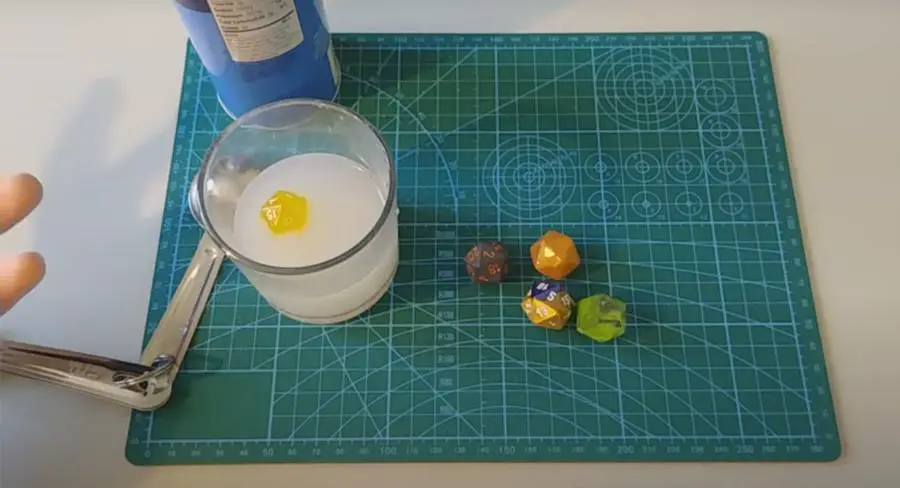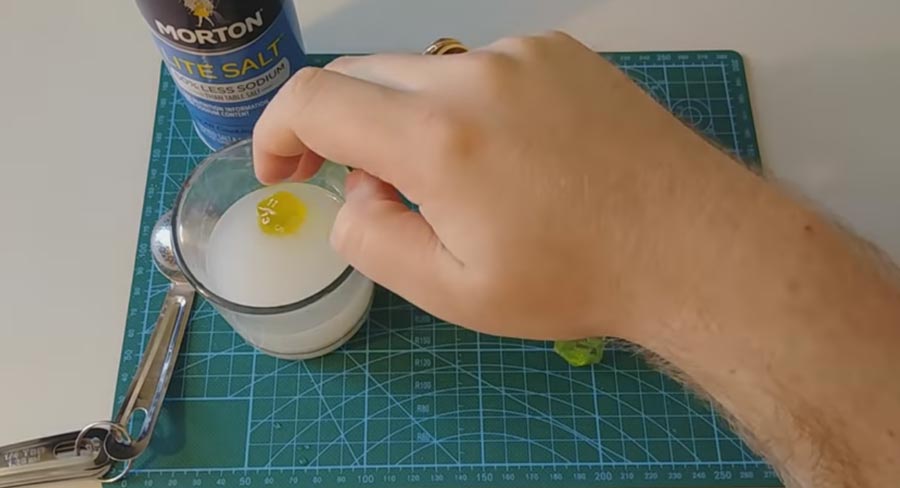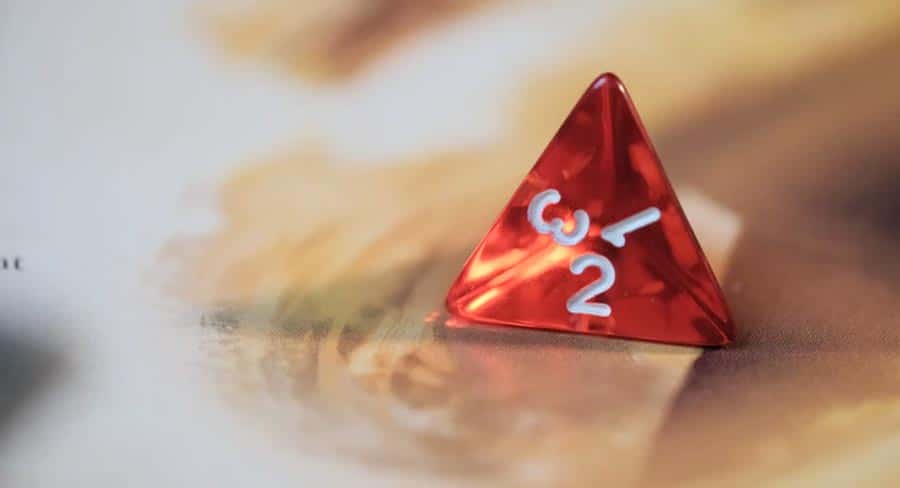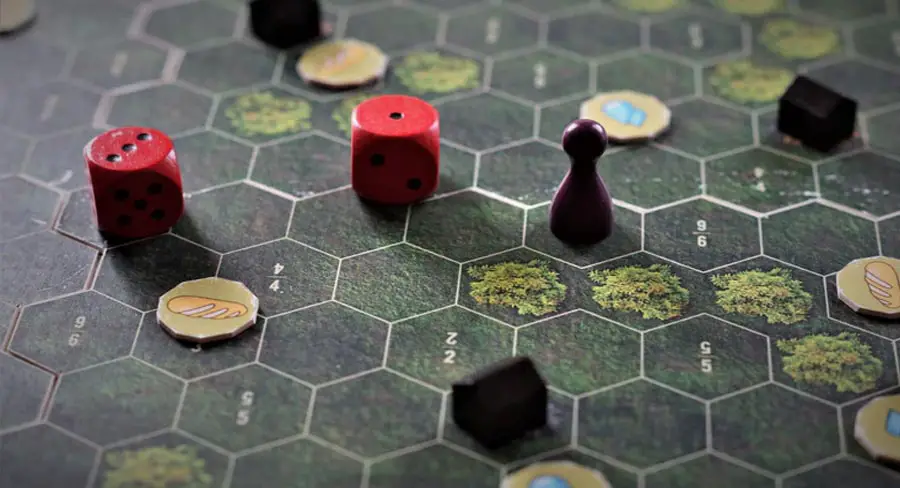Things can get pretty heated in a game session, the competition can get pretty tense, or maybe there are bets at stake for who will win the game. Therefore, you’re more focused than ever to get through as the winner. The problem is, if you’re playing a game that includes the use of dice, you have no choice but to leave it to your chances and trust lady luck. However, as you roll your dice, suddenly, you noticed that you’re always getting a bad roll. Or perhaps, the other players keep getting the best rolls throughout the game. Sounds like a bad play of luck? I tell you not!

That certainly ring a bell for something that’s so simple but gives great consequences, right? My friends, those are just some of the countless scenarios that can be caused by poorly balanced dice.
For today, allow us to tell you all about how to check your dice balance, and not only that, we’re also going to discuss why dice balance is essential and how to correct an imbalanced dice. To sum it up, we’re going to hit a number of birds with one dice in all throughout this reading. Are you ready? Without further ado, let’s all now take the roll towards the steps on keeping your games fun, fair, and random!
Here’s what you need for this tutorial
- The dice that you want to test – You may want to consider your dice in this test, because apparently, this doesn’t work on heavy and metal die.
- A small cup or jar (аor Saltwater balance test) – I’ll leave the size of the cup or jar you want to use so long as it conforms accordingly to the size of your dice. I would also like to recommend you to use glass cups and jars because you may want to use see through containers so that you can check the balance of your dice better.
- Water – You can use any type of water, so long as it’s hot, but I would like to suggest tap water for your convenience.
- Table salt

Before we get started, you might want to answer the question; does dice balance really matter at all? The simple answer is both yes and no. If you’re on a friendly game night at your relative’s house, then dice balance won’t matter as much since you probably just want to play for fun and family bonding.
Checking and improving dice balance can also be beneficial if you’re playing RPGs such as Dungeons & Dragons which uses seven dice to play.
It’s true that a set of dice may come perfectly balanced from day one. But no matter how perfectly balanced your dice is, as long as you use it, it’ll inevitably lose balance. It might not be that noticeable, but every time you roll your dice, small parts will chip or scratch off, especially with the edges, these chips and scratches will pile up soon enough and make obvious consequences to your plays in due time.
Saltwater Balance Test
Before we go into the step by step guide, we’ll first discuss the origins, scope, and limitations of this test. First off, the saltwater balance test has been originally used to test the balance of golf balls. Now, this test can only determine if a dice is balanced on the core. This test will not detect imbalance that’s caused by external damage like scrapes, chipping, or uneven surfaces.
Lastly, the saltwater balance test is only recommended for lightweight dice, so your metal and other heavy dice is not recommended for this.
And now let’s get into the step-by-step guide.
Prepare the following materials:
- 1/2 cup of water
- A small jar or cup
- Around 3-5 tablespoons of salt
- Your dice

Step 1
Now that you have your container with water, pour salt per tablespoon. And remember to stir and dissolve the salt before pouring another tablespoon. You can also put a die in to see if it floats yet.

Step 2
Once your dice can float with half above the surface, you can now proceed with the balance test.
Step 3
The test is simple, put the die on the water one by one and spin it with a stick. Then, observe how the die spins, and tally how frequent a number shows up.

If the dice is wobbly and keeps showing 1 or 2 numbers consistently, your die is not balanced, at this point you should throw the die aside if you’re playing competitively.

If the dice spins smoothly and freely, and keeps showing random numbers, your die is balanced, using the dice should be fine.
Other methods to check dice balance
The saltwater balance test is one of the easiest and most accurate tests there is. Anyone can do it. But there are more tests that are easier and more accurate than that. As I said above, the saltwater test is not reliable if you’re testing heavy and metal dice, and it’s not reliable for detecting external issues like uneven surfaces.
As a response to that, we’ve came up with other methods that you can use to determine the evenness of your dice fitting to your every need such as the following.
Visual Inspection
Visual inspection is as straightforward as it can get. Although it’s a bit more than just looking for imperfections, there are some tricks you can use to find faults and imperfections faster.
Here’s how to do a proper visual dice inspection.

Prepare the following materials:
- Dice
- Flat surface (e.g. gaming table)
- Good lighting material or a place where there is sufficient light for the inspection
- Magnifying glass (optional)
Step 1
Place your dice on the flat surface and use the lighting material (can be flashlight or a lamp) or the areas natural lighting for the precise examination of the dice. The light will allow you to spot any fault in your dice easily even without the optional material, magnifying glass.
Step 2
For the visual inspection, try to look at the edges of the dice first and look for any signs of unevenness such as nicks and scrapes around the dice’s corners. Do this on all the sides of your dice.
Step 3
If your dice shows any sign of nicks, scrapes, external air bubbles, or chipping around its edges, it’s a sign that you already have an unbalanced dice and you should keep your die away from serious and competitive games you want to play to avoid any unfair results to you and your playmates.
Step 4
If you found none of the faults mentioned above, then your die should be fine to use in one of your heated die game plays to assure fair gaming.
Geometry and Roll Frequency
One of the most reliable methods of checking dice balance is probably its statistic-based rolls based on the shape of the die you have. In this method, we would have to leave it to the tally board and see the results for ourselves.
Here are the procedures on how to check your dice balance using geometry and roll frequency.
- Grab your pen and paper and start to roll the dice on an even surface.
- Make sure that you tally every result from the roll you make.
- Do the roll approximately ten times.
- If your roll of dice repeated a result more than three times, it is a sign that you have an uneven dice. This is because according to a probability, a perfectly die should only repeat the same result once in every five (5) rolls.
- If your tally result goes the otherwise, then you can keep playing at your dice as it is still even and will still give a fair game to everyone.
Materials of Dices that has the Perfect Balance
Resin
Aside from being one of the most beautiful type of dice for its transparency and color, dice made with Resin are known for being perfectly balanced because of their impeccable accuracy in terms of their angles due to the mold they were shaped during their manufacturing.
Gemstone
Gemstone dice have the same balanced roll as you would expect from an acrylic dice. However, these dice made from semi-precious gemstones are produced by cutting edges from a natural stone thus can vary from their weights, and rolls.
Wood
Wooden dice are probably one of the most economical choice of dice out there. Dice that were made from this material are remarkably good in weight and have perfect rolls, given that their cuts are fairly done.
Metal
Dice made out of metal are not only impeccable in balance but also have great durability. Unlike the previous ones mentioned, metal dice are more sustainable when it comes to chipping and scrapes.
How to keep the balance of your dice?
There is a long list why our dice could lose its balance no matter how perfect it is when it first laid on our hands. However, what’s more important for us now is to learn how can we keep the balance of our dice for a long period of time so we won’t have to worry about changing them every now and then or be anxious about their rolls for the possibility that they are already with the defect.
For that purpose, here are some things to keep in mind that might help you:
Keep your dice in a proper storage
Taking good care of your dice is of course, the top of our list. If you want to keep your dice balanced, you may want to put them in a safe, dry, and well-kept place such as boxes or spacious drawers.
This will keep your dice from chipping due to circumstances such as your pets biting on it, or your toddlers and relatives stepping on them, and causing thin and invisible scrapes and nicks.
Do not toss your dice too hard or too high
Yes, our dice are made for fun tossing but doing this too hard or tossing it too high will affect the shape of your dice primarily that will lead to unevenness. The impact made on the high or hard toss has a significant effect on the shape of the dice.
For instance, a side is repeatedly being beaten up from these harsh tosses, it is inevitable that your dice will chip and scrape its edges, making it perfectly unbalanced.
While these instructions may help you keep your dice in balance for a longer time frame, it is also important that you realize that some unbalanced dice can’t be helped because of two reasons: its lifespan; and the defect caused by the manufacturer itself.

Nevertheless, these should be enough to allow you to keep your plays fair and nice for yourself and for the other players on your table.
Conclusion
So, did you enjoy our tutorial? We know that we all love playing games and there’s no fun to it if there are unfair factors present. Now that you learned everything you have to know about checking the balance of your dice and keeping it even, the rest of the roll lies in your hand! As we impart our knowledge to you, we can only go as far and it’s entirely up to you how to keep your dice rolling to your fair accord.
Keeping your dice balanced will not just give you a fair chance and games, but also a good analogy to your life, as keeping all sides balanced will help you and everyone around you procure good results.
If you find our tutorial helpful don’t hesitate to share them with your family and friends so they could keep on their rolls too and let us know what you think in the comment box below!